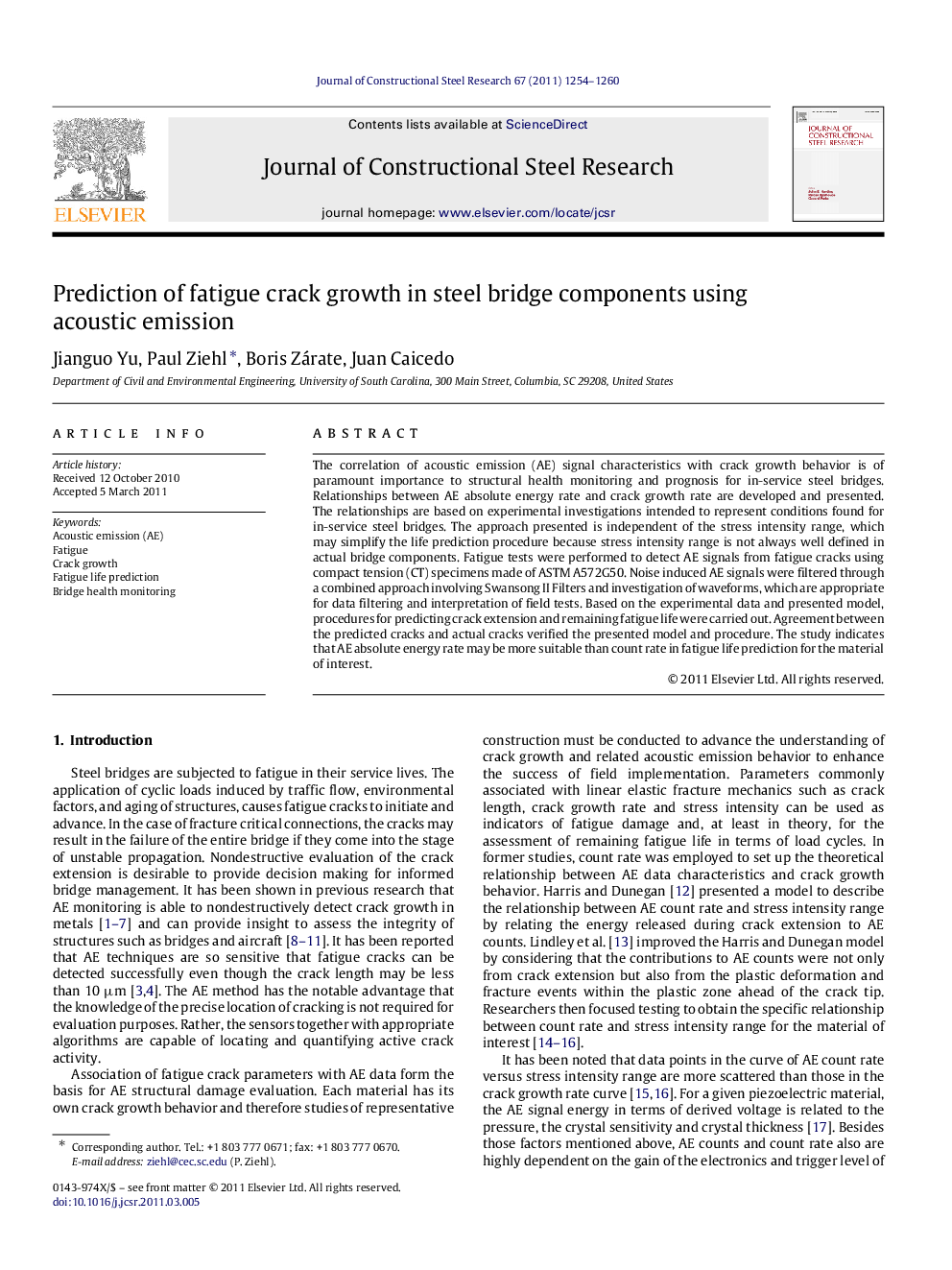| Article ID | Journal | Published Year | Pages | File Type |
|---|---|---|---|---|
| 285447 | Journal of Constructional Steel Research | 2011 | 7 Pages |
The correlation of acoustic emission (AE) signal characteristics with crack growth behavior is of paramount importance to structural health monitoring and prognosis for in-service steel bridges. Relationships between AE absolute energy rate and crack growth rate are developed and presented. The relationships are based on experimental investigations intended to represent conditions found for in-service steel bridges. The approach presented is independent of the stress intensity range, which may simplify the life prediction procedure because stress intensity range is not always well defined in actual bridge components. Fatigue tests were performed to detect AE signals from fatigue cracks using compact tension (CT) specimens made of ASTM A572G50. Noise induced AE signals were filtered through a combined approach involving Swansong II Filters and investigation of waveforms, which are appropriate for data filtering and interpretation of field tests. Based on the experimental data and presented model, procedures for predicting crack extension and remaining fatigue life were carried out. Agreement between the predicted cracks and actual cracks verified the presented model and procedure. The study indicates that AE absolute energy rate may be more suitable than count rate in fatigue life prediction for the material of interest.
► A crack growth prognosis methodology based on AE absolute energy rate is presented. ► Agreement between predicted cracks and actual cracks is demonstrated. ► Absolute energy rate rather than count rate is utilized in the model. ► The use of absolute energy rate improves the fatigue life prediction for steel bridges.
